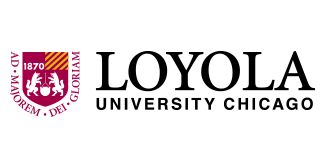Major
Business Administration
Anticipated Graduation Year
2021
Access Type
Open Access
Abstract
Consumers are increasingly supporting companies that interweave environmentally-conscious and sustainable practices into their business models. Consequently, companies are more likely to release sustainability reports detailing environmental initiatives. Similarly, the city of Chicago, Illinois, enacted an ordinance to track energy consumption in 1% of all Chicago buildings, which approximately accounts for 20% of total energy used by buildings. The ordinance was used to estimate that 71% of total citywide carbon emissions were from the city’s energy use in buildings. Due to the large energy use in buildings, the city of Chicago launched a goal to improve energy efficiency in municipal buildings by 10%. One option to consider implementing in order to aid in reaching this goal are green roofs, also called rooftop gardens or vegetated roofs. Green roofs can act as a natural insulation for buildings by absorbing heat and therefore reducing energy demands and effectively reducing greenhouse gas emissions. If significant differences in energy consumption and greenhouse gas emissions are discovered, then a recommendation to partake in green roof expenditures to the city of Chicago can be made. This study used linear regression to analyze multifamily housing properties in Chicago. It was concluded that Chicago should invest in green roofs in buildings with less than an average energy consumption of 7,7,778,730 kBtu.
Faculty Mentors & Instructors
Carolyn Kmet, BHNR 343 - Analytical Decision Making
Creative Commons License

This work is licensed under a Creative Commons Attribution-Noncommercial-No Derivative Works 3.0 License.
Effect of Green Roofs on Multifamily Housing Greenhouse Gas Emissions in Chicago
Consumers are increasingly supporting companies that interweave environmentally-conscious and sustainable practices into their business models. Consequently, companies are more likely to release sustainability reports detailing environmental initiatives. Similarly, the city of Chicago, Illinois, enacted an ordinance to track energy consumption in 1% of all Chicago buildings, which approximately accounts for 20% of total energy used by buildings. The ordinance was used to estimate that 71% of total citywide carbon emissions were from the city’s energy use in buildings. Due to the large energy use in buildings, the city of Chicago launched a goal to improve energy efficiency in municipal buildings by 10%. One option to consider implementing in order to aid in reaching this goal are green roofs, also called rooftop gardens or vegetated roofs. Green roofs can act as a natural insulation for buildings by absorbing heat and therefore reducing energy demands and effectively reducing greenhouse gas emissions. If significant differences in energy consumption and greenhouse gas emissions are discovered, then a recommendation to partake in green roof expenditures to the city of Chicago can be made. This study used linear regression to analyze multifamily housing properties in Chicago. It was concluded that Chicago should invest in green roofs in buildings with less than an average energy consumption of 7,7,778,730 kBtu.


